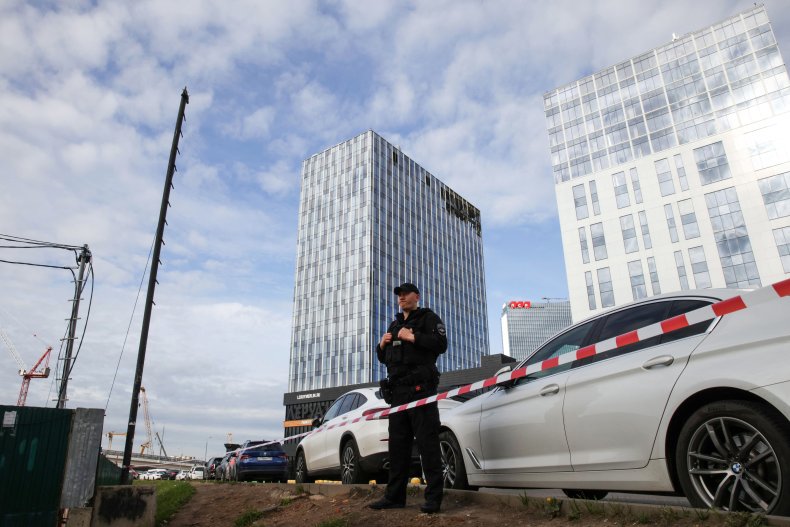Ukraine's drone strikes against Moscow on Monday revealed a critical flaw in Russia's defense systems, a Ukrainian military official said.
Russia on Monday said that Ukraine launched a drone attack on the capital city of Moscow, with one drone targeting an area near the Ministry of Defense's headquarters, as well as nonresidential buildings. Moscow Mayor Sergei Sobyanin said there were no casualties in the strikes, which comes as Ukraine launches a counteroffensive aimed at retaking control of territory seized by Russia amid its invasion of Ukraine.
It remained unclear whether the drones were targeting the Ministry of Defense, and Ukrainian military intelligence spokesperson Andriy Yusov has pledged the attacks would continue and increase in scale, though Kyiv has not officially commented on the strike. Meanwhile, Russia has accused Ukraine of terrorism over the latest attack.
The strikes appeared to reveal a flaw in Moscow's air defense system.

Yuriy Ihnat, a spokesperson for Ukraine's air force, said later Monday that the Pantsir system installed on the roof of the Russian Ministry of Defense, located roughly 300 meters away from one of the drone strike targets, failed to shoot down the strikes.
He explained that the Pantsir systems are only capable of firing at objects above its level, rather than below, thus leaving a vulnerability in Russia's air defense systems in central Moscow.
"But if there are tanks on the hill, I'm just curious how they will shoot when the drone or some other aircraft will fly lower. And the drone of this building, on which it was placed, cannot shot down. It was created to shoot up. That's why such decisions look more or less strange," he said.
According to Radio Free Europe/Radio Liberty journalist Mark Krutov, photographs from earlier in July showed that the Pantsir systems remained in place earlier in July.
Newsweek reached out to the Russian Ministry of Defense for comment via email.
What Are Pantsir Air Defense Systems?
Pantsir air defense systems were installed in January after Ukraine successfully launched an aerial assault against a target within Russian borders, prompting concerns about Moscow's vulnerability in future attacks. Photos and videos circulated across social media earlier this year showing images of these defense systems on the rooftops of key government buildings in the Russian capital.
While other systems such as the S-400 may have stronger firepower, the Pantsir system is more ideal for an urban setting, Newsweek previously reported. The systems are intended for use at closer range and incorporate a mix of anti-aircraft guns and missiles capable of intercepting high-speed air-to-ground missiles at a range of 7 kilometers (slightly over 4 miles) and tactical aircraft at up to 20 kilometers (more than 12 miles).
Pantsir-S1 air defense systems have also been placed near the residence of Russian President Vladimir Putin.








